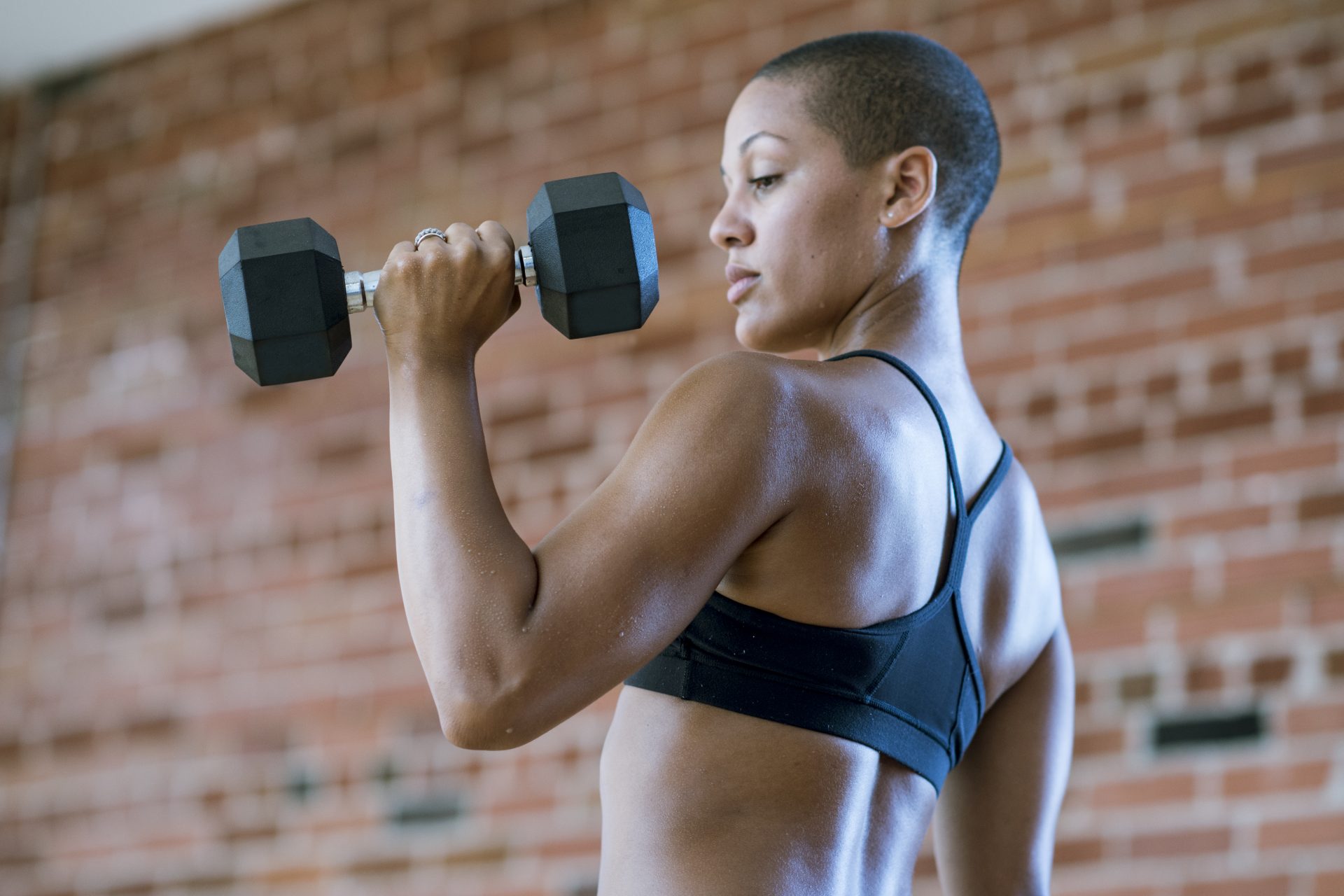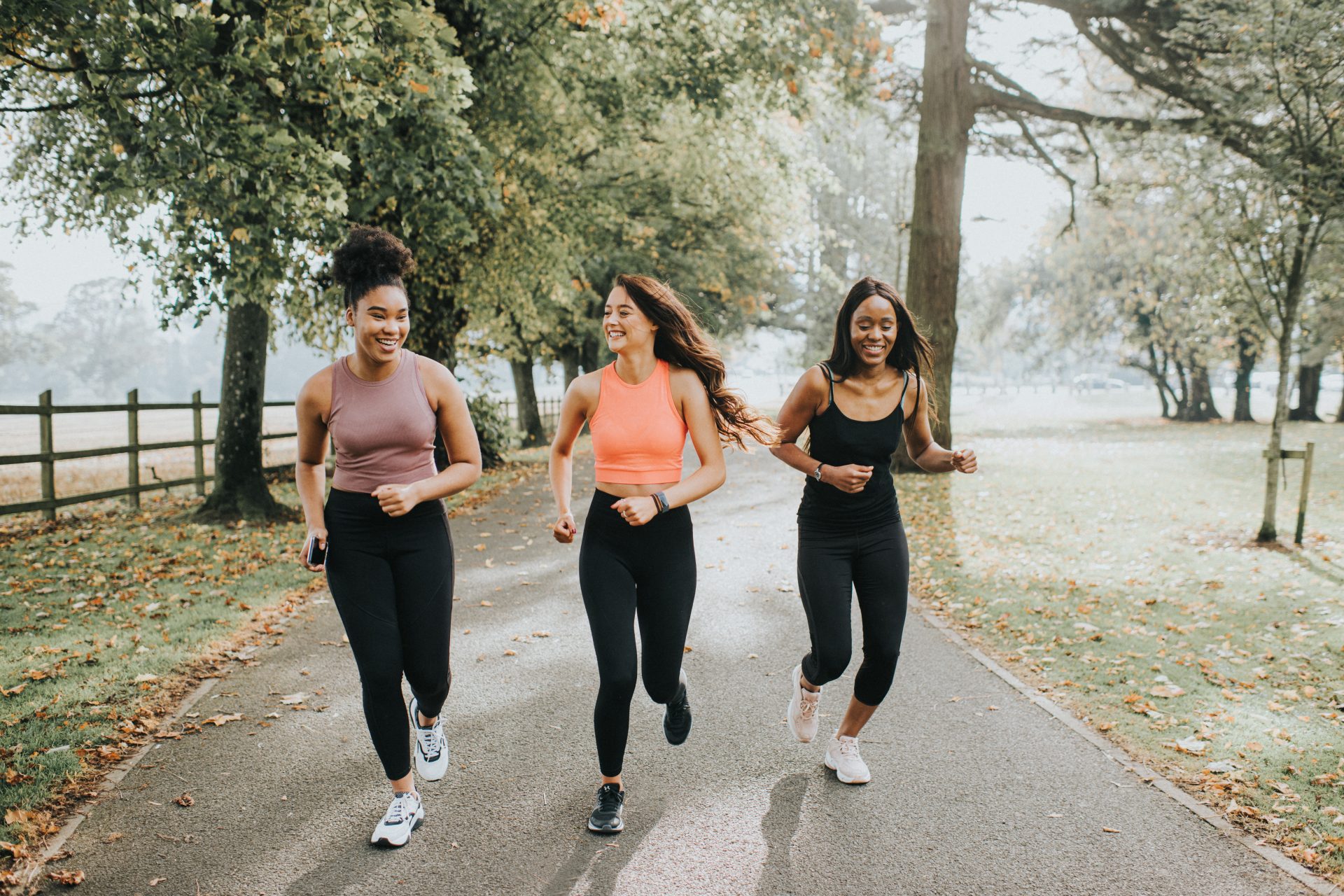
The key signs that your training sessions are paying off.
Fitness progress is difficult to measure. That’s because it’s rarely linear, going up and down according to your schedule, sleep, diet or menstrual cycle. It’s also hard to take note of how far you’ve come given that it takes a long time to see progress; take this as a PSA that overnight results don’t exist.
With that confusion in mind, it can be easy to want to throw the towel in on your training programme. Before you do, read this advice from fitness trainers on the key – yet unexpected – signs of progress in your training.
You may also like
Why does exercise feel easy one day and hard the next?
Improved recovery
For Emma Obayuvana, fitness trainer for Strong Women Training Club, it’s about what happens after your workout is done. “Perhaps your heart rate and breathing return to normal at a faster rate than before,” she says. This can be applied to both cardio and weights, but if it’s strength progress you’re after, she also says proof lies in your post-set tiredness: “Not feeling so fatigued after a certain number of reps means your body is adapting.”
Lifting heavier
If you are finding that you’re getting to the end of your set without feeling fatigued, it’s probably a sign that you can add more weight. Lifting more is a clear sign of progress, but there’s no rule for how fast the strength gains should be coming.

It is widely understood that beginners will be able to increase strength at a much faster rate than experienced exercisers, but most trainers suggest it will take around eight to 12 weeks to start noticing a big difference in strength. In fact, one study showed that strength training four to six times a week for 12 weeks increased mitochondria – the energy source for cells – by 50%, suggesting participants were stronger and fitter.
Increased confidence
If you’re training for mental and physical wellbeing, don’t only track your progress by what your body can do. Growing more confident in the gym is a huge sign of progress, and upping the weights can be a mental challenge as well as a physical one.
You may also like
Exclusive: Jessica Ennis says this is the way to find confidence in the gym
“For me, being able to do a few more reps has always been largely mental – the more I trained, the more confident I became that I probably could start chest pressing using 2 x 15kg weights, rather than 12kg, or go from a 15kg overhead press to a 17kg,” says Strong Women editor Miranda Larbi.
Chatting away
One way to measure intensity is by measuring perceived exertion – this is rating how hard you find exercise out of 10. Larbi finds this a simple way to track progress, too: “I like to consider how comfortable and how much energy I have when running. For example, on longer runs, you might find you’re initially able to hold a conversation for 10 minutes before becoming too short of breath. Soon, you might find you can talk the entire way around the route.”

Enjoying training
It’s not just your heart rate and muscle fatigue that you should measure after training, but also your mood. If you’re leaving the gym feeling exhausted, miserable or annoyed, something is probably up with your workouts. Consider: have you tried to push yourself too hard? Set unrealistic expectations for what you could achieve? Focused too much on what you look like rather than what you’re capable of? If so, you might want to rejig your training.
You may also like
How to fall in love with exercise, according to influencer and powerlifter Meg Boggs
“One way I know my workouts are working is primarily that I’m consistent and I actually enjoy exercising,” agrees personal trainer Eni Adeyemo. “I enjoy adding variation to keep me interested, and so right now I know my workouts are working as I am faster on the treadmill, able to hold more moves in pole and I am inclined to consistently rest and eat well.”
Every day feels easier
Your progress doesn’t have to only be measured by what you can do in your workouts, but also by how you feel in your everyday life, notes personal trainer and founder of Mind+Motion, Hannah Lewin. “As fitness levels improve, you may notice that ADL (activities of daily life) such as carrying shopping or walking to work all become much more comfortable and require less energy expenditure. This is one of my favourite ways that clients notice an improvement in fitness – it’s a wonderful by-product but one that often makes a huge difference to people’s lives.”
Images: Getty
Source: Read Full Article